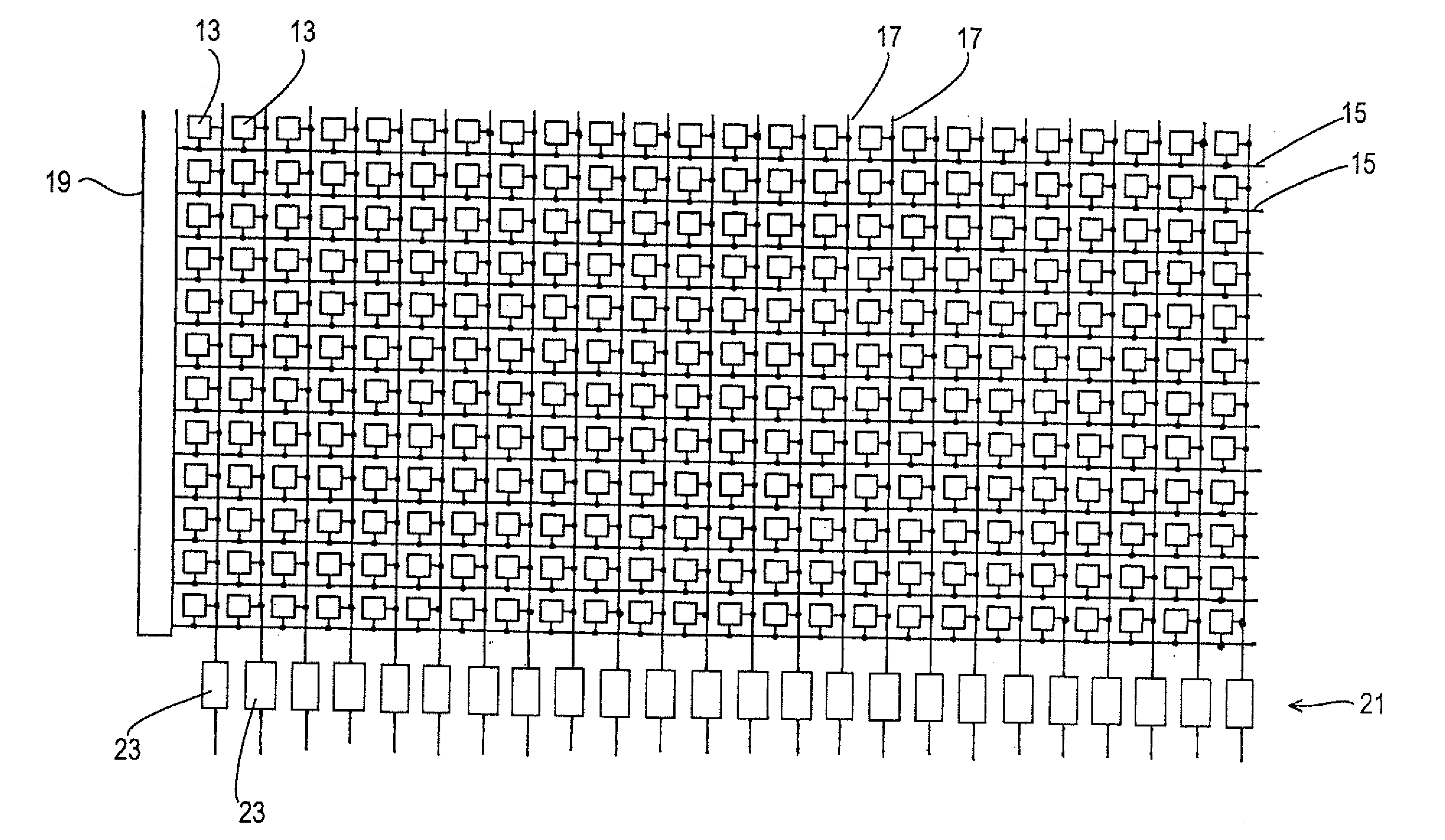Image sensor
- Summary
- Abstract
- Description
- Claims
- Application Information
AI Technical Summary
Benefits of technology
Problems solved by technology
Method used
Image
Examples
Embodiment Construction
[0043]The single-channel image sensor shown in FIGS. 1 and 2 includes an image field 11 which is formed from a plurality of pixels 13 which are arranged along rows and columns. A separate row selection line 15 is provided for each row; a separate column line 17 for each column. The reading out of the image sensor takes place row-wise. For this purpose, the pixels 13 of the respective row are switched to the column lines 17 on the basis of control signals which are transmitted by means of the respective row selection line 15. A row addressing logic 19 is provided for addressing the row selection line 15 associated with the respective row to be read out. Differing from the simplified representation in accordance with FIG. 2, a plurality of column lines 17 can also be provided for each column, with each column line 17 of a column only being able to be associated with some of the pixels 13 of this column.
[0044]A row 21 of column amplifiers 23 is provided beneath the image field 11. The ...
PUM
 Login to View More
Login to View More Abstract
Description
Claims
Application Information
 Login to View More
Login to View More - R&D
- Intellectual Property
- Life Sciences
- Materials
- Tech Scout
- Unparalleled Data Quality
- Higher Quality Content
- 60% Fewer Hallucinations
Browse by: Latest US Patents, China's latest patents, Technical Efficacy Thesaurus, Application Domain, Technology Topic, Popular Technical Reports.
© 2025 PatSnap. All rights reserved.Legal|Privacy policy|Modern Slavery Act Transparency Statement|Sitemap|About US| Contact US: help@patsnap.com



